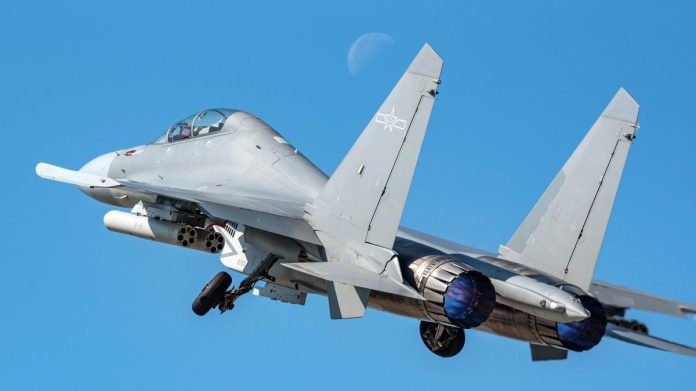Tensions Escalate as Chinese Jet Endangers Australian Navy Helicopter in International Waters
In a recent alarming incident, a Chinese jet fighter dropped flares dangerously close to an Australian Navy helicopter during a routine operation in international waters. The event, which occurred in the Yellow Sea off South Korea, has drawn sharp condemnation from Australian Defence Minister Richard Marles, who labeled it as unprofessional and unacceptable.
According to reports, the near-catastrophic encounter unfolded around 7.30 pm (AEST time) on Saturday, when a Navy Seahawk helicopter operating from HMAS Hobart was intercepted by a Chinese J10 Air Force jet. The Chinese jet dropped flares approximately 300 meters ahead of the Seahawk, barely 60 meters above it, compelling the Australian helicopter to take evasive maneuvers to avoid a potential collision with the falling flares.
Fortunately, the quick reflexes of the Australian pilot prevented any casualties or damages. However, the severity of the incident underscores the volatility of interactions between military forces in contested regions, particularly amidst heightened geopolitical tensions.
Defence sources have emphasized the potentially disastrous consequences of the situation, highlighting that the Seahawk typically operates with a crew of four to six individuals. The fact that no one was harmed does not mitigate the seriousness of the incident, but rather underscores the professionalism and skill of the Australian personnel involved.
In response to the incident, Defence Minister Marles has condemned the actions of the Chinese jet, stating that Australia has formally communicated its concerns to Beijing. He emphasized the importance of adhering to international norms and standards, particularly when conducting military operations in accordance with UN Security Council sanctions.
The context of the encounter adds another layer of complexity to the situation. HMAS Hobart was engaged in Operation Argos, a UN mission aimed at preventing North Korea from smuggling sanctioned goods across international waters. The incident highlights the delicate balance of enforcing international law while navigating potentially volatile encounters with other maritime powers, such as China.
Marles reiterated Australia’s commitment to upholding international law and norms, stressing the expectation of professional and safe interactions between military forces. The unprovoked aggression displayed by the Chinese jet serves as a stark reminder of the risks inherent in such operations and the need for continued vigilance and diplomatic engagement to prevent escalation.
As tensions persist in the Indo-Pacific region, incidents like these underscore the importance of clear communication, de-escalation protocols, and respect for international maritime laws. While this particular incident did not result in casualties, it serves as a wake-up call for all parties involved to exercise restraint and responsibility in their actions at sea. Failure to do so could have far-reaching consequences for regional stability and security.


